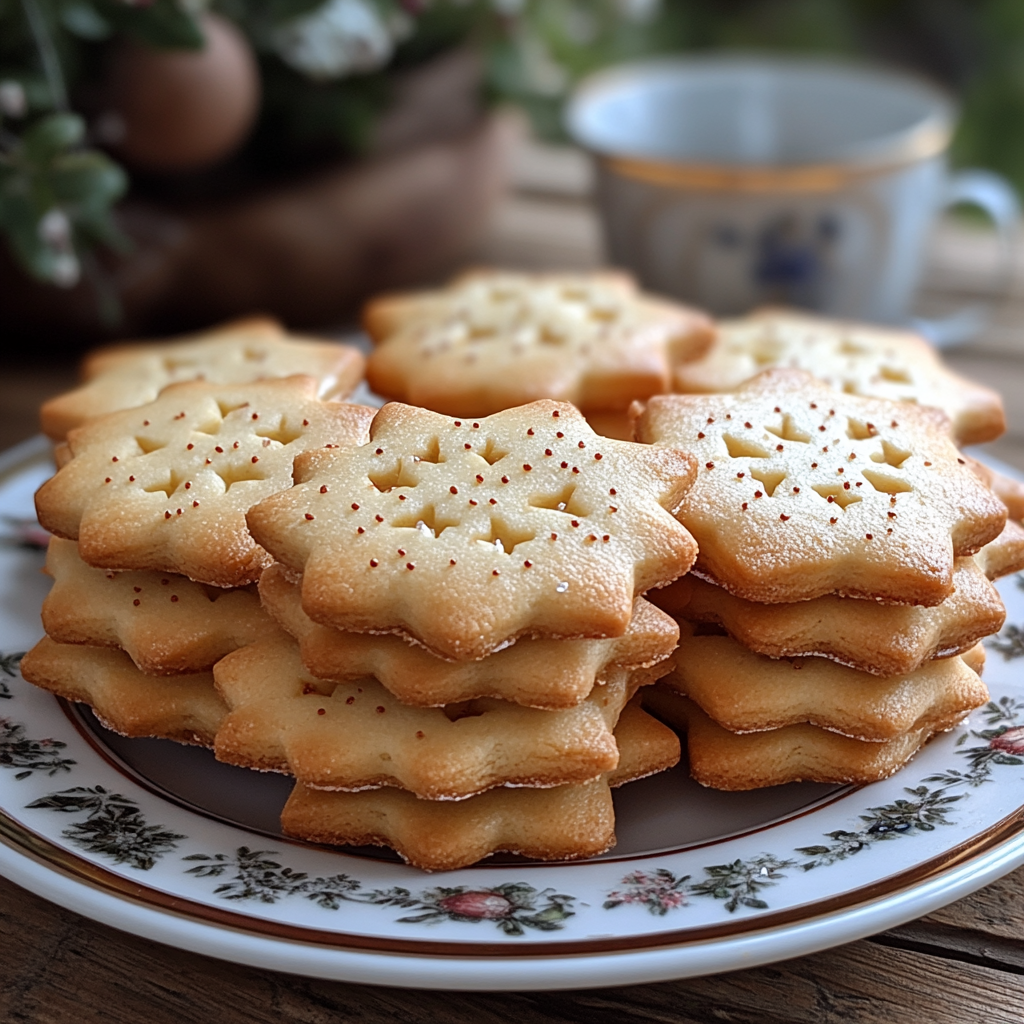Have you ever bitten into a cookie so wonderfully sweet and nutty that it transported you to a world of indulgence? What if I told you that the secret to that delightful experience lies in marzipan?
Originating from the Mediterranean, marzipan is a delectable treat made from finely ground almonds and sugar, boasting a rich history that dates back centuries. Whether as a decorative element on cakes or a sweet filling in confections, marzipan has captured the hearts and taste buds of many. Combining this luxurious ingredient into cookies opens up a whole new realm of flavor and texture that will make you the star of any gathering.
If you’re ready to elevate your baking game and impress your friends and family, it’s time to explore the world of marzipan cookies. From their beautifully intriguing appearance to their irresistible taste, these cookies are a perfect blend of crunch and chewiness, finished with that unmistakable hint of almond richness. Get ready to discover irresistible recipes and tips to create marzipan cookies that will leave everyone wanting more!
Essential Ingredients for Marzipan Cookies
Marzipan cookies are a delightful fusion of nutty almond flavor and sweet confections, offering a unique texture and taste. To create the perfect batch of marzipan cookies, it’s important to understand the essential ingredients that make them shine. Here are the key components:
Almonds and Almond Paste
Almonds are the star ingredient in marzipan cookies. The almond flavor comes from almond flour, almond paste, or a combination of both. Almond paste provides a rich, nutty base, while almond flour or ground almonds enhance the texture. Look for a high-almond content marzipan to achieve a deeper almond flavor.
Sugar and Confectioners’ Sugar
Sugar is indispensable in marzipan cookies, contributing sweetness and balance. Granulated sugar or caster sugar is often used, while confectioners’ sugar adds a delicate texture. Balancing these sugars is key to achieving the perfect bite—not too sweet but just right.
Eggs and Egg Whites
Eggs, particularly egg whites, act as a binding agent, ensuring that the cookies hold their shape. Some recipes also call for egg yolks, which lend richness and moisture. Egg wash can be brushed on top for a glossy finish.
Flavoring Agents: Vanilla and Orange Zest
Vanilla extract and orange zest bring subtle yet impactful flavors to marzipan cookies. A teaspoon of almond extract can also be added to amplify the almond essence. These ingredients elevate the cookies from basic to extraordinary, tantalizing the taste buds.
Types of Marzipan Cookies
Marzipan cookies are versatile, with countless variations to suit different occasions and tastes. Here are some popular types:
German Walnut Marzipan Cookies
These cookies combine the rich taste of marzipan with ground walnuts for added depth and texture. Shaped into small rounds, they are baked until golden brown and often garnished with a walnut half or slivered almonds.
Marzipan-Stuffed Almond Sugar Cookies
In this version, sugar cookie dough is wrapped around small balls of marzipan. The result is a chewy almond-flavored center encased in a buttery, crisp cookie.
Soft & Chewy Almond Paste Cookies
These cookies highlight almond paste as the central ingredient. With their soft texture and slightly chewy center, they’re a favorite among almond lovers.
Festive Marzipan Holiday Cookies
Perfect for holidays, these cookies can be shaped into festive designs and decorated with colored sugar, chocolate glaze, or slivered almonds. They’re a visual and flavorful treat.
Preparation Methods
Crafting marzipan cookies requires attention to detail, especially during mixing, shaping, and baking.
Mixing Techniques
Using a stand mixer with paddle attachments is ideal for combining the basic ingredients, such as almond paste, sugar, and butter. Incorporate dry ingredients, like flour and baking powder, gradually to avoid lumps. A pinch of salt or kosher salt can be added to enhance flavor.
Shaping and Forming Cookies
Marzipan cookie dough is versatile and can be rolled, piped, or shaped by hand. Use tools like a cookie stamp or an ice cream scoop for uniformity. Dough balls can be flattened or shaped into 1-inch balls for even baking.
Baking Temperatures and Times
Preheat the oven to 320ºF to 350ºF, depending on the recipe. Line baking trays with parchment paper, silicone baking mats, or ungreased baking sheets. Bake the cookies for 10-15 minutes or until they’re golden brown. Let them cool on a wire rack to avoid overbaking.
Tips for Perfect Marzipan Cookies
Common Mistakes to Avoid
- Overmixing the dough: This can result in tough cookies.
- Skipping the chilling step: Chilling the dough prevents cookies from spreading too much during baking.
- Using low-quality marzipan: The almond content directly affects flavor.
Achieving the Right Texture
Aim for a balance between crisp edges and a soft, chewy center. Using ground almonds or almond meal can help achieve the desired texture. Avoid overbaking, as marzipan cookies should remain moist.
Using Quality Ingredients
High-quality almond paste, unsalted butter, and fresh eggs make a noticeable difference. When possible, opt for homemade marzipan for an authentic flavor.
Storage Instructions
Best Practices for Keeping Cookies Fresh
Store marzipan cookies in an airtight container to maintain their flavor and texture. Separate layers with parchment paper to prevent sticking.
Freezing Marzipan Cookies
Marzipan cookies freeze well. Arrange them in a freezer-safe container with parchment paper between layers. Thaw at room temperature before serving.
Cultural Significance of Marzipan in Germany
Historical Background
Marzipan has a long history in Germany, where people consider it a delicacy. Originating in Lübeck, it’s a staple in holiday baking and a symbol of festivity.
Marzipan in Festive Traditions
German households often include marzipan cookies in their Christmas spreads. You can share The cookies with your loved ones and signify joy and togetherness.
FAQs About Marzipan Cookies
Can I Substitute Ingredients?
Yes, almond flour can often replace ground almonds, and store-bought marzipan can substitute homemade varieties. Adjust sugar levels accordingly.
How Do I Know When Cookies Are Done Baking?
Marzipan cookies are ready when they’re golden brown around the edges and slightly soft in the center. we don’t recommend the toothpick test for these cookies due to their dense texture.
Variations and Customizations
Incorporating Different Nuts
You can enhance the Marzipan cookies with ground walnuts, pecans, or hazelnuts for a twist. Slivered almonds or almond halves also make excellent garnishes.
With these tips and methods, you’re all set to create marzipan cookies that are as delicious as they are beautiful. Whether for holidays, special occasions, or an everyday treat, these cookies are sure to delight marzipan lovers everywhere.
Related Recipes:
- Sourdough Bagel Recipe
Explore the art of making sourdough bagels for a savory contrast to your marzipan cookies. - English Muffin Recipe
Perfect for breakfast or as a base for your favorite toppings, these muffins add variety to your baking repertoire. - Cottage Cheese Recipes
Discover the versatility of cottage cheese in both sweet and savory dishes. - Butter Pecan Pound Cake Recipe
A decadent, nutty dessert that pairs well with marzipan cookies for a holiday spread. - Cuccidati Recipe
Italian fig cookies that share a similar festive appeal to marzipan cookies. - Kolache Recipe
Sweet or savory filled pastries with a Central European origin, perfect alongside marzipan cookies for a cultural dessert platter. - Italian Wedding Cookies
These tender, almond-flavored cookies are a delightful companion to marzipan cookies on a dessert tray.

